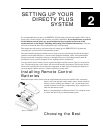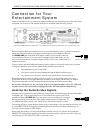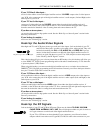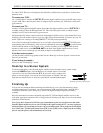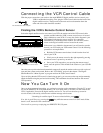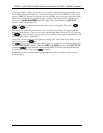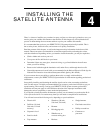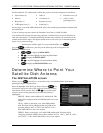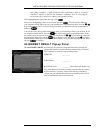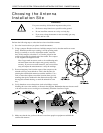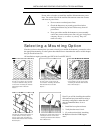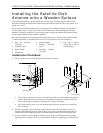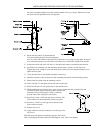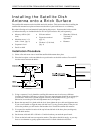
PAGE 4-1
There’s a cluster of satellites way out there in space, and just as a telescope is pointed at a star, you
need to point your satellite dish antenna at the satellites. In this chapter we will explain the basic
process for determining where to mount and how to point your satellite dish antenna.
It is recommended that you have your DIRECTV PLUS System professionally installed. This is
due to safety issues, electrical codes, and assurance of a quality installation.
Read the contents of this chapter, as well as the important safety information in the front of this
manual. These instructions are intended for an installer experienced in performing the various
tasks described here. Depending on how you intend to install the antenna, you may be required to:
• Climb a ladder and work on your roof.
• Use a power drill to drill holes in your house.
• Determine if there are water pipes, electrical wiring, or gas lines hidden in the walls near
where you will be drilling.
• Route coaxial cable through the foundation wall, under floors, and through interior walls.
• Ground the antenna and coaxial cable as recommended in the National Electrical Code (by the
National Fire Protection Association, Batterymarch Park, Quincy, MA 02269).
If you are unsure about your ability to perform these tasks or comply with installation
requirements, contact your DIRECTV PLUS System dealer for information regarding professional
installation.
Successfully installing and obtaining the satellite signals can be a time consuming and tedious
task. For that reason, it is highly recommended that you contact a professional installer to get you
up and running. The warranty covering your DIRECTV PLUS System assumes professional
installation and may not apply in self installation situations since improper installation could
damage the various components or cause undesired performance.
If you decide to install the satellite dish antenna yourself, we recommend you purchase the Do-It-
Yourself Installation Kit. It contains many items you will need to complete most installations.
You will need some of the following tools, depending on your installation:
• Electric drill
• Drill bits (1/8-inch,
3/16-inch, 1/2-inch
masonry)
• Carpenter’s level
• Pencil or chalk
• Tape measure
• Wrenches (3/8-inch,
5/16-inch, 7/16-inch)
• Hammer
• Hole digging tools
• Wheelbarrow or
concrete mixing box
• Hacksaw
• Sledge hammer
• Flat blade screwdriver
• Phillips screwdriver
• Cinometer or
protractor
INSTALLING THE
SATELLITE ANTENNA
4



